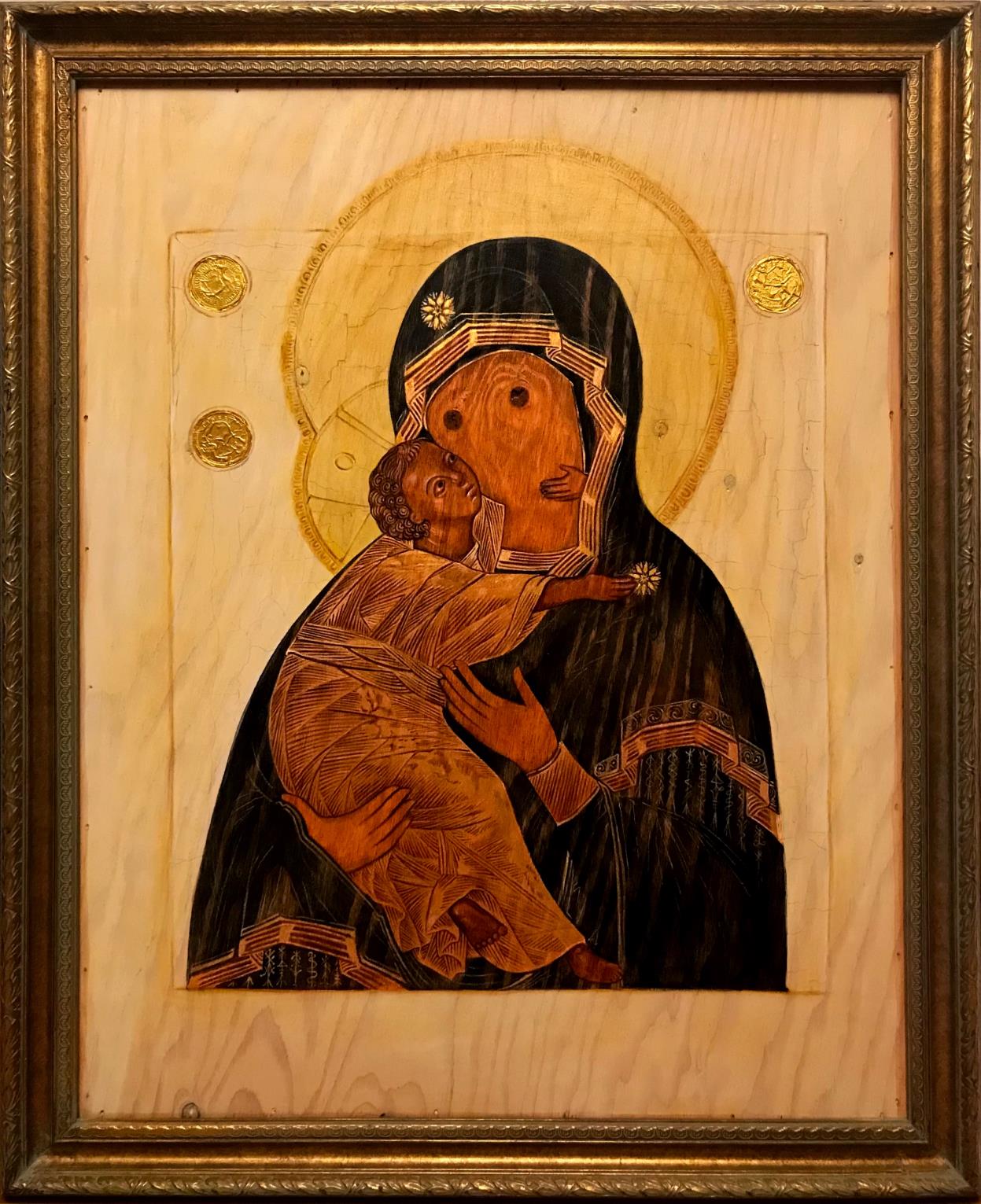2021 Southwest Washington Regional Juried Art Exhibition
Charters was born in the Yorkshire Dales in the North of England, she paints from her studio in Olympia, WA. She holds and MFA from Chelsea College of Art in London and a BFA (hons) from Cardiff S. Wales. Charters worked with sculptor Andy Goldsworthy on two outdoor sculptures. As a student she studied under Graham Crowley and Amanda Faulkner researching feminism and the language of materials in art. While tackling issues of feminism it occurred to her how extremely difficult it is to represent the female form from her own perspective. Informed by her life experiences which include working internationally in the male- dominated animation business, and concern that her children will likely face similar daunting prospects, inspired her decision to address and highlight such disparity and under-representation in her art.
Artists like Magritte and Duchamp have been referencing images in fine art for decades. More recently artists such as Mickalene Thomas, Awol Erizku, Fabiola Jean-Louis and Cindy Sherman have used recognizable images in fine art to either poke fun or make a statement. With contemporary artists such as these, I take great delight in joining in the conversation.
Western verbal and visual communication systems represent a predominantly white, heterosexual cis-male perspective. This creates huge problems in communication for anyone else. For women, the most obvious difficulty is portraying their body image without it seemingly on display for male appreciation. While the images of women’s bodies are ubiquitous, women's accomplishments are mostly invisible. Using a public gallery setting with historically known paintings, in a non-aggressive manner, my art is dedicated to showing how women are presented but not represented in art, society and history. The woman’s body is omitted from renderings of famous paintings leaving the board it was painted on, highlighting the lack of documented female genius in recorded history, lack of societal appreciation, wage inequality, lack of proportional representation in politics, and other disparities. Materials are pertinent. Frames keep the missing women contained and presentable, and they are dressed in shiny packaging. Women from a young age are encouraged to succeed and at the same time take on a supportive role, juggling multiple responsibilities while being pressured to look picture-perfect. Most do not get the compensation and recognition they deserve outside the realm of domesticity. More recently my attention has turned to the mass exodus of women from the workforce to care for children during the pandemic, and as with many issues women face, we rise to the challenge uncompensated, unobserved and unappreciated, with black, indigenous and women of color disproportionately affected.

Byzantine Muse and Child | Acrylic on Board | 27.5" x 33.5"
